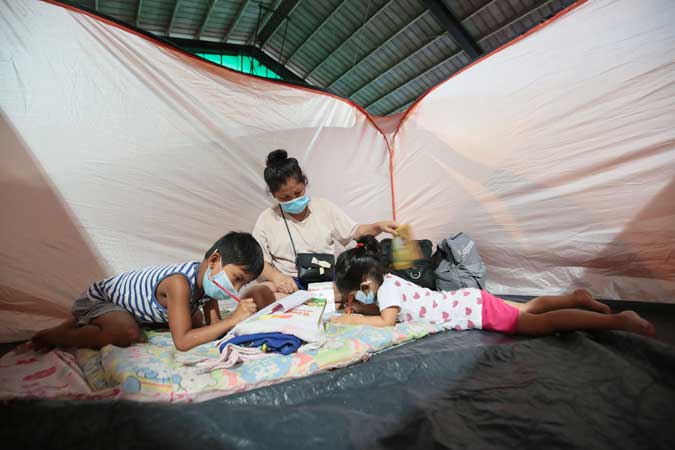THE Department of Education said the new school year will start on Sept. 13, but face-to-face classes will still not be allowed unless given the go signal by Malacañang. — PHILIPPINE STAR/ MICHAEL VARCAS
THE RESUMPTION of face-to-face classes and the further reopening of more sectors will help the Philippine economy avoid long-lasting damage from the coronavirus pandemic, Socioeconomic Planning Secretary Karl Kendrick T. Chua said.
In a briefing on Tuesday, Mr. Chua said the economic team is concerned about the possible medium to long-term damage caused by the pandemic on the economy, especially sectors severely affected by the lockdowns.
Managing the risks of shutting down the economy and containing the spread of the coronavirus disease 2019 (COVID-19) should be the most cost-effective way of preventing economic scarring for the country, he said.
“And the other thing that we advocate really is to pave the way already for the resumption of face-to-face schooling, the long-term scarring effects of students not being able to learn has a permanent effect also on their future productivity,” Mr. Chua said.
An Asian Development Bank (ADB) report in April showed the country may have lost 0.61 learning-adjusted year of schooling due to the class disruptions last year, which was equivalent to an 8.11% decline from 2020’s baseline.
The ADB had estimated school closures may cost Filipino students $26.9-36.1 billion in lifetime earnings for not attaining the potential income they could have obtained had the pandemic not occurred.
The Department of Education said the new school year will start on Sept. 13, but face-to-face classes will still not be allowed unless given the go signal by Malacañang.
Mr. Chua said the government will continue to manage the health and economic risks, especially as the country is experiencing a new surge in COVID-19 infections.
“I think we should resume our original strategy of, number one, opening more sectors of the economy while adhering to health standards; number two, beginning the plan to open some schools for pilot face to face; and number three, allowing children and families to have more healthier lives by going out safely,” he said.
The Health department on Tuesday reported 8,560 new COVID-19 cases, bringing active cases to 79,016. Metro Manila and nearby provinces are under the strictest form of lockdown until Aug. 20 to curb a Delta-driven surge.
Think tank Oxford Economics in a July 30 report warned that the Philippine economy faces deep scarring from the pandemic. It estimated the country’s projected gross domestic product (GDP) in 2025 will still be 8.4% lower than its pre-pandemic forecasts.
The debt watcher Moody’s Investors Service also warned of the rising prospects for long-term economic scarring for the Philippine economy as the virus outbreak continues to dampen its recovery.
The government is aiming for a 6-7% growth this year from last year’s 9.6% slump. The economy has to grow by at least 8.2% in the second half to meet at least the lower end of the target, after it registered 11.8% growth in the secon d quarter. — B.M.Laforga

